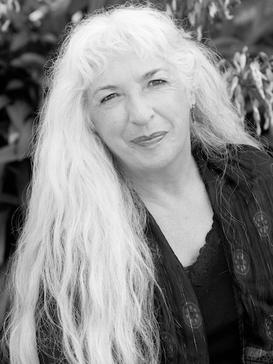Australian archaeology is a large sub-field in the discipline of archaeology. Archaeology in Australia takes four main forms: Aboriginal archaeology, historical archaeology, maritime archaeology and the archaeology of the contemporary past. Bridging these sub-disciplines is the important concept of cultural heritage management, which encompasses Aboriginal and Torres Strait Islander sites, historical sites, and maritime sites.
Devil's Lair is a single-chamber cave with a floor area of around 200 m2 (2,200 sq ft) that formed in a Quaternary dune limestone of the Leeuwin–Naturaliste Ridge, 5 km (3.1 mi) from the modern coastline of Western Australia. The stratigraphic sequence in the cave floor deposit consists of 660 cm (260 in) of sandy sediments, with more than 100 distinct layers, intercalated with flowstone and other indurated deposits. Excavations have been made in several areas of the cave floor. Since 1973, excavations have been concentrated in the middle of the cave, where 10 trenches have been dug. Archaeological evidence for intermittent human occupation extends down about 350 cm (140 in) to layer 30, with hearths, bone, and stone artefacts found throughout. The site provides evidence of human habitation of Southwest Australia 50,000 years before the present day.
Aboriginal Australians have inhabited Western Australia from around 50,000–70,000 years ago to present.
The Jardwadjali (Yartwatjali), also known as the Jaadwa, are an Aboriginal Australian people of the state of Victoria, whose traditional lands occupy the lands in the upper Wimmera River watershed east to Gariwerd (Grampians) and west to Lake Bringalbert.
The Djab Wurrung, also spelt Djabwurrung, Tjapwurrung, Tjap Wurrung, or Djapwarrung, people are Aboriginal Australians whose country is the volcanic plains of central Victoria from the Mount William Range of Gariwerd in the west to the Pyrenees range in the east encompassing the Wimmera River flowing north and the headwaters of the Hopkins River flowing south. The towns of Ararat, Stawell and Hamilton are within their territory. There were 41 Djab Wurrung clans who formed an alliance with the neighbouring Jardwadjali people through intermarriage, shared culture, trade and moiety system before colonisation. Their lands were conquered but never ceded.
Peter John Frazer Coutts was an Australian archaeologist who was first director of the Victoria Archaeological Survey (VAS), the precursor to the Heritage Branch of Aboriginal Affairs Victoria.

Kimberley points are a type of Aboriginal stone tool made by pressure flaking both discarded glass and stone. Best known for the points made of glass, these artifacts are an example of adaptive reuse of Western technology by a non-western culture.

Aboriginal Victorians, the Aboriginal Australians of Victoria, Australia, occupied the land for tens of thousands of years prior to European settlement. Aboriginal people have lived a semi-nomadic existence of fishing, hunting and gathering and associated activities for at least 40,000 years.
Ian D. Clark is an academic historian and Toponymist whose primary work has focused on Victorian Aboriginal history, aboriginal toponymy and the frontier conflict between Indigenous Australians and immigrant settlers during the European settlement of Victoria, Australia.
David Frankel is Emeritus Professor in Archaeology, Faculty of Humanities and Social Sciences, Department of Archaeology and History at La Trobe University.

Aboriginal sites of Victoria form an important record of human occupation for probably more than 40,000 years. They may be identified from archaeological remains, historical and ethnographic information or continuing oral traditions and encompass places where rituals and ceremonies were performed, occupation sites where people ate, slept and carried out their day to day chores, and ephemeral evidence of people passing through the landscape, such as a discarded axe head or isolated artefact.

Tachylite is an unusual and relatively rare stone used in making flaked stone tools, and which is found in Aboriginal archaeological sites in Victoria, Australia.

The University of Queensland Anthropology Museum is located in Brisbane, Australia. It houses the largest university collection of ethnographic material culture in Australia.
Sandra Bowdler is an Australian archaeologist, emeritus professor of archaeology and former head of the Archaeology Department at the University of Western Australia.
Johan (Jo) Kamminga is an archaeologist based in Canberra, Australia. He has played a prominent role in the formation of the practice of Australian archaeology and in particular the Academic discipline.
The Yapurarra or Jaburara, also rendered Yaburara, are an Aboriginal Australian people whose traditional lands are in the Pilbara region of Western Australia and the Dampier Archipelago.

Deborah Bird Rose (1946-2018) was an Australian-based ethnographer of Aboriginal peoples; plus, in her lifetime, an increasingly ecological, multi-species ethnographer and leader in multidisciplinary ethnographic research
Her research since the 1980s has focused on entwined social and ecological justice, based on long-term fieldwork with Aboriginal people in Australia. Her approach has drawn on elements of anthropology, history, philosophy, cultural studies, religious studies, and animal studies and has led to innovative understandings of ethnographic and ecological knowledge, most recently in the new area of multispecies ethnography
Dr Josephine McDonald is an Australian archaeologist and Director of the Centre for Rock Art Research + Management at the University of Western Australia. McDonald is primarily known for her influence in the field of rock art research and her collaborative research with Australian Aboriginal communities.
Juukan Gorge is a gorge in the Hamersley Range in the Pilbara region of Western Australia, about 60 kilometres (37 mi) from Tom Price. It was named by the daughter of Puutu Kunti Kurrama man Juukan, also known as Tommy Ashburton, who was born at Jukarinya.
Puritjarra is an archaeological site located in the western part of Central Australia in Cleland Hills, 350 kilometers west of Alice Springs. An ancient rock shelter, this site is located within the traditional Aboriginal lands of the Kukatja people. The site is significant due to its ancient rock art and the stone artifacts that have been found there.





